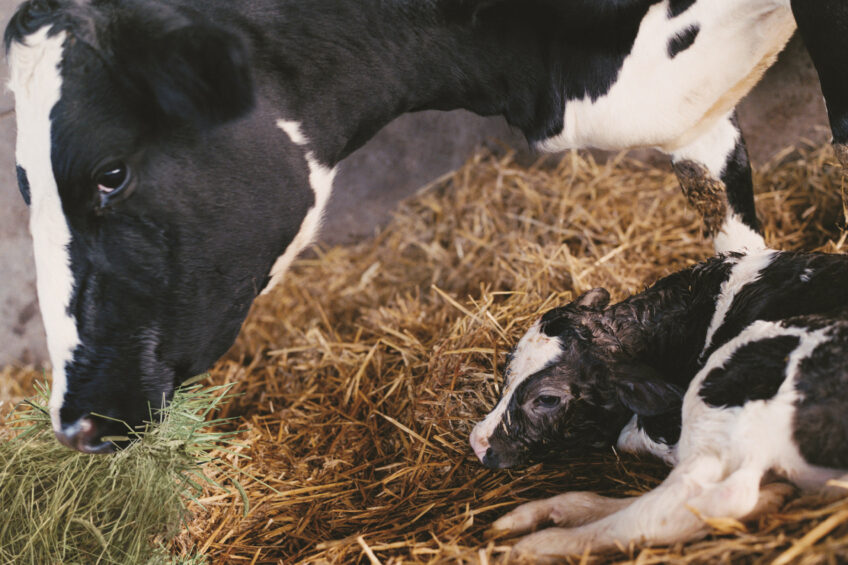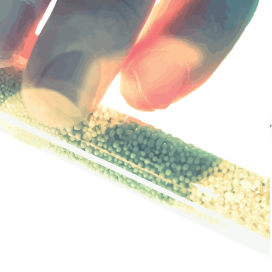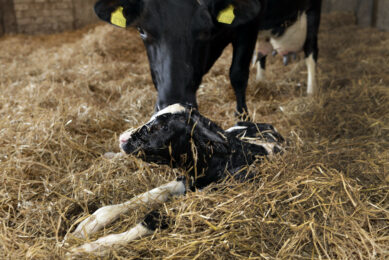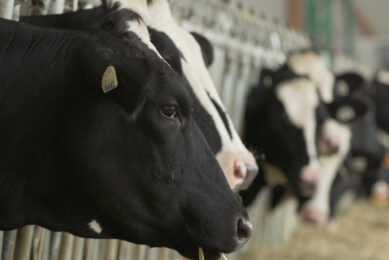Liver health is crucial during the transition period

The transition period is a very challenging time for the dairy cow. Her metabolism needs to adapt rapidly from a non-lactating to a lactating stage and the reproductive system is preparing new ova for the next breeding period. Supplementing the diet with B vitamins can play an important role.
The sudden change in metabolism in the transition period increases the dairy cow’s energy requirement by 3 times, with a very high demand for glucose needed for milk synthesis and oocyte quality. Often dry matter intake is not sufficient to meet this increased energy requirement, and tissues become resistant to insulin. Body fat reserves are mobilised to release non-esterified fatty acids (NEFA) as an additional energy source. This adaptive metabolism is normal with our high producing cows but it becomes detrimental when the extent of body fat mobilisation is more important than the liver’s capacity to metabolise it. Liver will be infiltrated with fat and will have reduced functionalities.

Liver functionality and importance
Liver health is crucial for the dairy cow since it is involved in many important functions like glucose production, detoxification of ammonia, production of antibodies, etc. Ruminants are different from monogastrics (swine, poultry) because rumen microbes metabolise (modify) the glucose supplied by the diet into volatile fatty acids. The dairy cow needs to synthetise glucose and the liver is where the synthesis occurs. In early lactation, dairy cow producing 40 kg of milk will need 2.9 kg of glucose per day just for milk production. This creates added pressure on the liver. Obviously liver health becomes crucial to maximise glucose production.
A supply of crucial nutrients is a good tool to improve liver health during the transition period. Choline and some B vitamins like folic acid, B12 and riboflavin play specific roles to either reduce body fat mobilisation, improve liver fat oxidation and increase fat export out of the liver (Figure 1). These valuable functions will alleviate liver fat infiltration.
Figure 1 – Choline and B vitamins roles in reducing liver fat infiltration.

Increasing dry matter intake
A blend of choline, folic acid and riboflavin was shown to increase dry matter intake pre-partum; this results in additional energy and is a critical parameter to reduce the need for body fat mobilisation. Choline and folic acid are involved in the production of carnitine necessary for liver fat oxidation, which helps to reduce the amount of fat that may have infiltrated the liver, and improve its functionality. B12 also play a role in liver fat oxidation through a different mechanism, by reducing the level of methyl malonic acid. Choline, folic acid and B12 are methyl donors, meaning they will exchange a methyl group with other compounds; this is mandatory in the production of very low density lipoprotein (VLDL) which are used to transport fat out of the liver.
There is a very high demand for methyl donors during the transition period. The amino acid methionine is also a good source of methyl groups but its role in reducing liver fat infiltration is not clear since other functions like milk protein synthesis and immunity take priority. Choline is involved in production of milk fat and the demand for choline during early lactation is prioritised for milk production at the expense of production of VLDL for liver fat export. Folic acid and B12 are linked in their function as methyl donors and their use for reduction of liver fat infiltration increased during the transition period.
Positive effect of B vitamin supplementation
A well-recognised and practical indicator of liver health is the measurement of Beta Hydroxy Butyrate (BHB) during the transition period. BHB will be produced in higher quantity mainly when liver fat oxidation is incomplete due to elevated liver fat infiltration. High blood BHB level is also related to ketosis incidence, in fact, the percentage of cows with blood BHB levels over or equal to 1.2 mmol/l indicate the herd prevalence of subclinical ketosis.
Studies done on large commercial farms compared the dietary supplementation of a blend of protected folic acid, riboflavin and choline to protected choline alone (Jefo research reports 2012-2014). Blood BHB levels were reduced by more than 50% in all problem herds when supplemented with the blend of the vitamins compared to choline alone (Figure 2). Healthier cows produced also more milk (Figure 3). The improvement over choline alone may be explained by the important role of folic acid and riboflavin on liver health and the synergy of these vitamins with choline.
Protected* B vitamins are an innovative tool to improve the liver health of your cows during their transition period. Healthier liver means healthier cows and will lead to increased milk production and improved reproduction. This represents substantial economic gains for your farm.
*Microencapsulated to prevent ruminal degradation of the B vitamins.
References available on request
Join 13,000+ subscribers
Subscribe to our newsletter to stay updated about all the need-to-know content in the dairy sector, two times a week.




